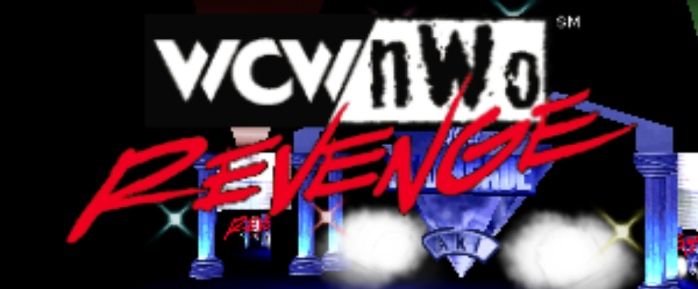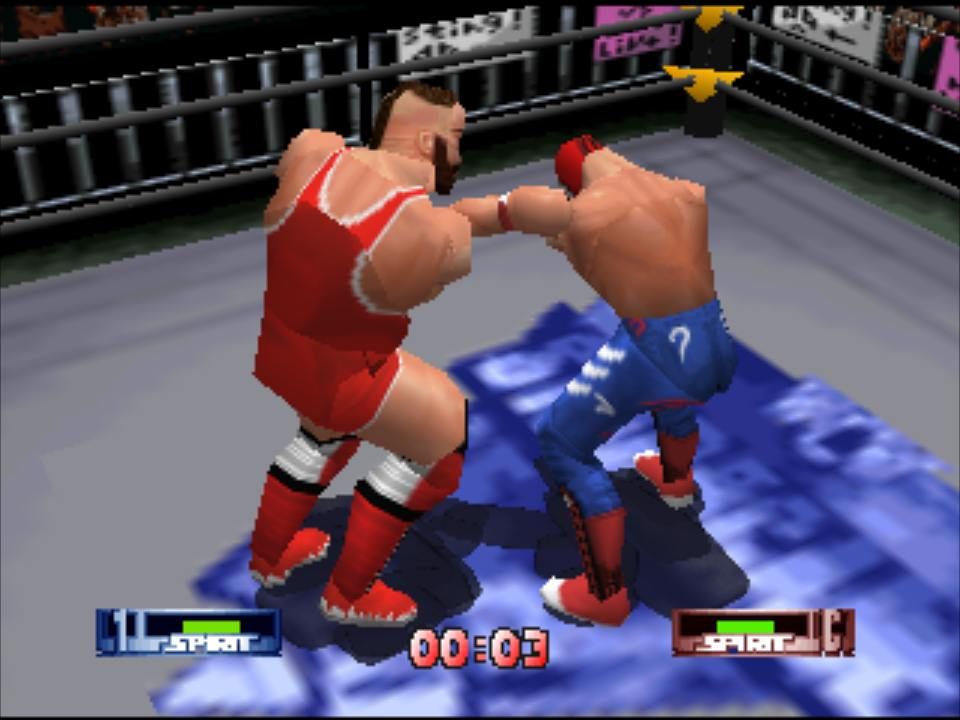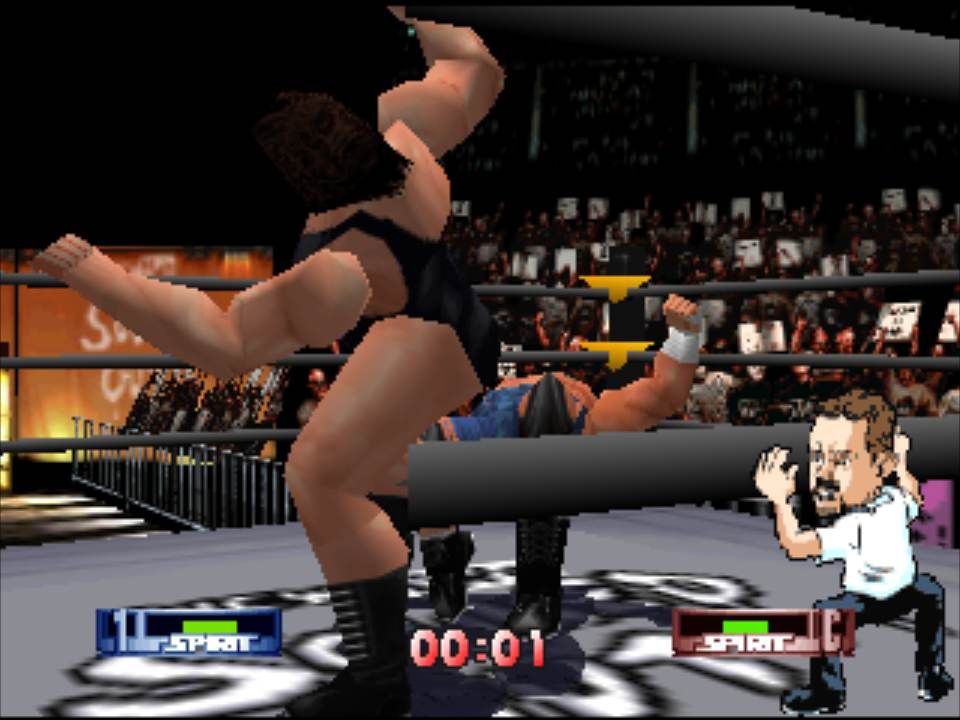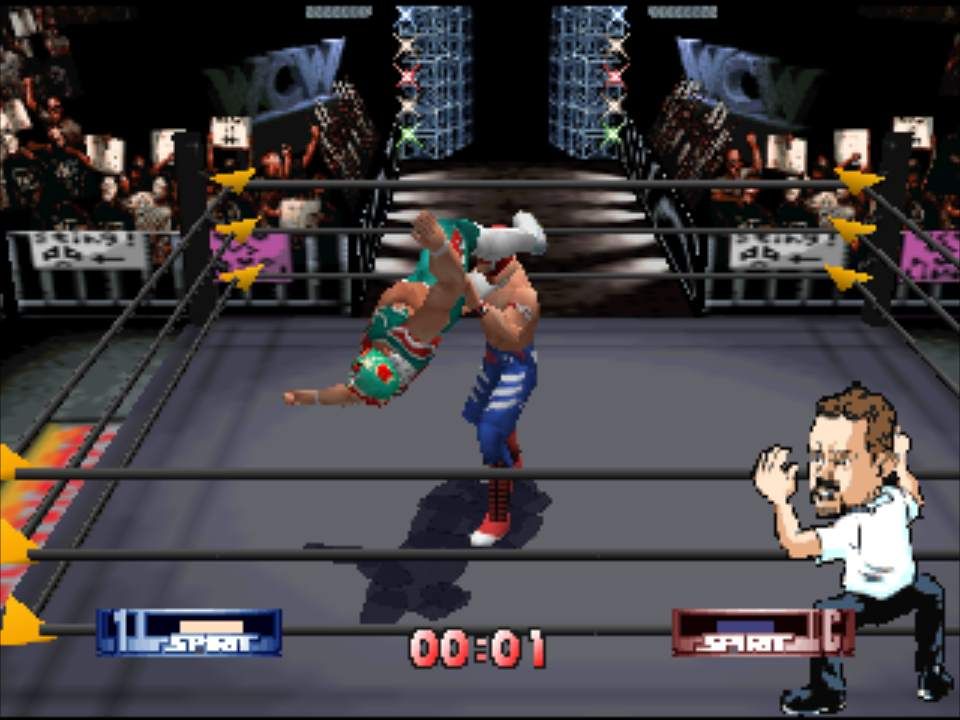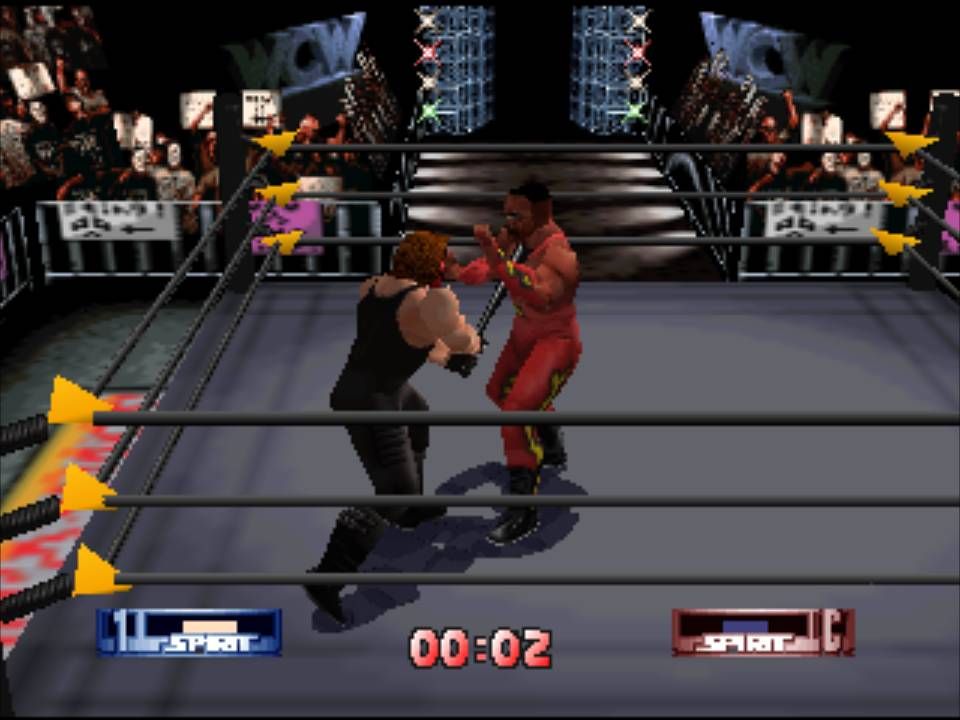Watch your step, for you’ve just entered the Graveyard. Inside, we’ll be digging up games that have long been without a pulse. You’ll see both good and bad souls unearthed every month as we search through the more… forgotten…parts of history.
The late '90s were a golden age for pro wrestling across the world. Mexico was strong with AAA, the US war between WCW and the WWF led to ratings that hadn't been seen in many years with the industry as a whole reaching new levels of critical acclaim in Japan as well. It was a great time for wrestling games as well, with Yuke's creating the first 3D wrestling game with Toukon Retsuden and Aki raising the stakes with their own Virtual Pro Wrestling series. The first two entries showed what was possible, with the second entry getting an international release that put four-player wrestling gaming on the map and Revenge took that ball and ran with it.
VPW 64/WCW/NWO World Tour featured a big roster, but a lot of it was made up of knock-off characters like a Fire Pro Wrestling game. Revenge was WCW-centric and at the perfect possible time with one of the most stacked rosters in history. Many of the best in the world from Mexico and Japan were in the company and beyond missing people like Ric Flair who was on the outs with the company at the time, there's no game that acts as a time capsule for a promotion quite like this one.
With a competitor at the time in WWF Warzone that had a roster nearly one year out of date, it led to both games having Bret Hart and Davey Boy Smith in them -- which was a large part of the roster of Warzone due to how small its roster was, while they made up just two of the over forty playable characters in Revenge. For US-released games, no company was putting out games with a larger roster than Aki at the time and they loaded up as many characters with unique touches as they could. The original La Parka/LA Park featured a chair and a lot of dancing, while Sting had his bat with him for his entrance.
There were a lot of small touches in the gameplay too, like grabbing weapons from the crowd being carried over from the prior game -- but having the ability to throw foes backstage and then they bring out a weapon from there. Unfortunately, it wouldn't be until the next WCW game in Mayhem that backstage areas would be a part of wrestling games, but it's still a fantastic little touch and makes the whole arena area feel alive.
The same kind of thing extends to the sets themselves, which were entirely distinct in those days with each event getting a custom set design instead of today's model of a single core set design and then changing the LED boards for an event. Here, you have a handful of WCW's '98 stages, but they're all replicated near-perfectly. The most-impressive stages to see replicated now are the Bash at the Beach set, which still looks fantastic alongside the classic Nitro stage, and one of the all-time best sets in the form of the '97 Halloween Havoc set. While the sets themselves are fantastic, entrances are underwhelming without the authentic theme music, which was seemingly removed mid-development as magazine ads brought up authentic themes being included and the final game just has a couple of songs like the Nitro theme -- which is a fine show intro song, but has no punch to it as walkout music.
The core gameplay is a massive year-over-year improvement from WCW vs. NWO World Tour, which was essentially a reskin of Virtual Pro Wrestling 64 and felt like it, as it had WCW arenas and some of the roster, but a small roster of company stars and no attempt to replicate the company's production values. Revenge did the best job of any game to this point at trying to capture the look and feel of a company's TV presentation at the time, with accurate Chyron graphics for the roster and virtual versions of title belts.
The refinements to gameplay make this feel like a great game to play 25 years later, with fast cruiserweight action that holds up nicely alongside more technical and strike-based combat thanks to the combo system. A hard press of the A button and then pressing B for some of the roster, like Goldberg and New Japan legend Yuji Nagata, allow them to bust out a combination of standing strikes to wear enemies out. Virtual Pro Wrestling 2 would release about a year and a half later in Japan and expand this system into a whole MMA gameplay engine to a degree and enable tapouts from the ground, but the origins of that system are in play here.
Visually, Revenge has held up nicely thanks to Aki doing such a meticulous job hand-animating every move in the game. Everything makes visual sense and there are no immersion-breaking issues like characters warping around the ring area or odd, unrealistic selling animations. Every move is reacted to as it logically should, outside of the little bell ding sound effect used for when a low blow is done. Framerates are solid as well and unlike WWF No Mercy two years later, slowdown isn't an issue with four characters on-screen at once.
One area that Revenge falls short on is its soundtrack, which doesn't have a lot of variety of in-match music. The core sound effect work is largely impressive, with a satisfying snap for chops and a harsh crunch for punches and brutal neck-dropping suplexes and throws. There's even an attempt made to make moves sound different depending on where they're done -- resulting in more of an impactful thud if you slam someone on the wooden boards at the Bash at the Beach set than just mid-ring.
WCW/NWO Revenge is somehow a quarter-century old and yet still one of the finest wrestling games ever made. No game has quite captured a company at the height of its popularity quite like it, with an all-star roster of legends and future legends to ensure some of the most-replayable wrestling action in gaming history. This was the first time an Aki engine game felt like a true representation of a company at a point in time and it's a great time capsule - perhaps an even better one than either of their WWF offerings. While it's unlikely to ever be officially re-released, Revenge remains a master class in genre.

